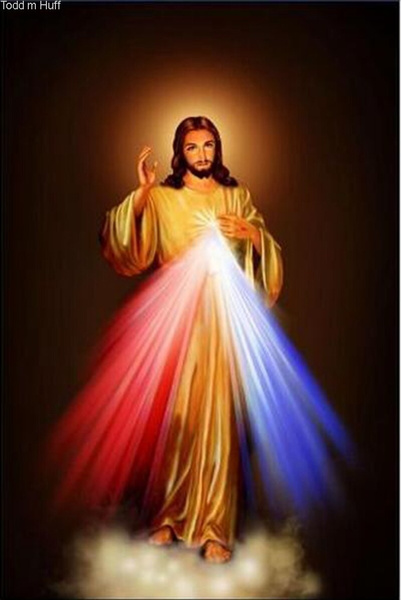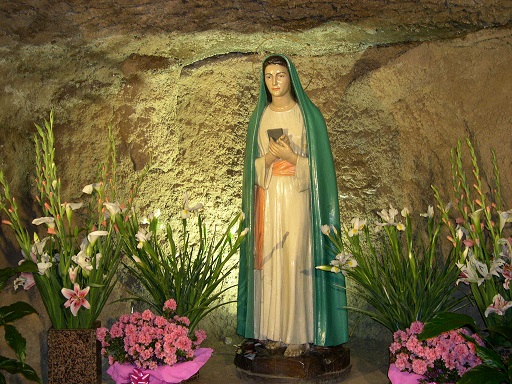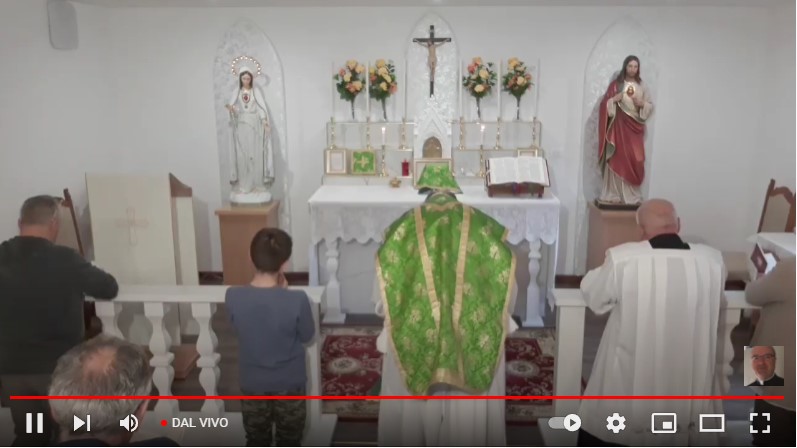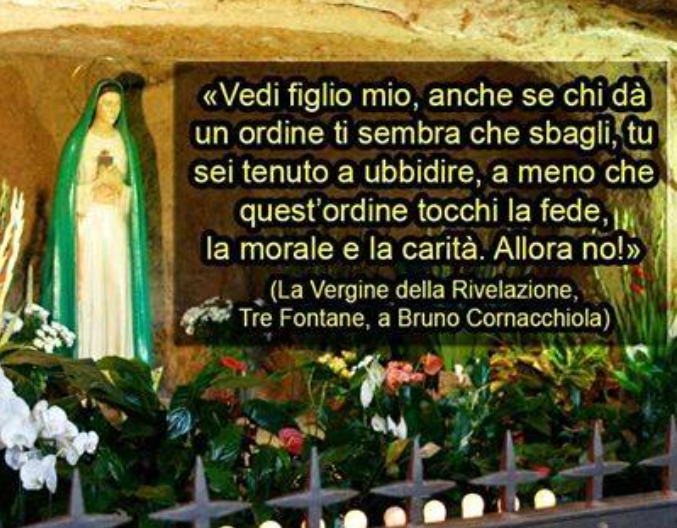

Fondamenti logici della filosofia, filosofia della scienza, rapporti con la teologia






Oggi ricordiamo San Damaso (305 circa, Spagna; 11 dicembre 384, Roma) di istruzione e cultura latina (studio’ a Roma). Ricevette gli ordini sacri presso Papa Liberio, che allora governava la Chiesa. Quando poi questi venne esiliato a Berea dall’imperatore Costanzo, Damaso lo segui’. Alla morte di Liberio, avvenuta nel 366, fu eletto a succedergli Damaso (1).
Fu un grande difensore della fede contro l’eresia e gli avversari della chiesa.
Damaso si mise con grande ardore a riformare la Chiesa, mirando soprattutto alla formazione del clero. Sotto il suo pontificato si tennero tre concili: In due sinodi romani (368 e 369 o 370) condannò fermamente l’eresia di Ario (2) e quella analoga di Apollinare (3). Nel secondo dei due sinodi scomunicò Aussenzio, il vescovo ariano di Milano (che comunque mantenne la sede fino alla morte, nel 374, quando fu sostituito da Ambrogio). Importante fu anche il concilio di Antiochia (378) (4).
Oltre ai Carmina che si leggono nelle Catacombe sulle tombe dei Martiri, l’opera memorabile di Damaso è quella di aver commissionato a S. Girolamo la traduzione in latino della Sacra Scrittura (La Vulgata).
Nel Vetus Ordo noi leggiamo i testi della Vulgata, che esprime meglio la nostra fede. Con la lingua latina conserviamo il tesoro della Sacra Scrittura.
Gesu’ nel vangelo assegna a Pietro il compito di guidare la Chiesa. Oggi e’ Benedetto XVI il nostro Vicario di Cristo.
PPBXVI non e’ libero, dato che di fatto e’ tenuto in cattivita’. E’ lui infatti, a dispetto delle apparenze, che e’ il vero papa. Ma le porte degli inferi non prevarranno! Come papa Damaso anche Benedetto XVI sta sostenendo prove durissime.
Noi siamo spiritualmente vicini a Benedetto XVI. Continuiamo a pregare per lui! Diciamo sempre la verita’!
Dio ci soccorre in ogni istante e presto svelera’ l’inganno della falsa chiesa!
Sia lodato Gesu’ Cristo! Sempre sia lodato!
__________________
(*) Questo commento e’ scritto in tempo reale durante l’omelia. Mi scuso per l’eventuale misinterpretazione delle parole di Don Enrico.
(1) Anche San Damaso, oltre a combattere con successo l’eresia ariana (e quella analoga di Apollinare), ebbe a che fare con un anti-papa, un certo Ursino che riusci a farsi nominare vescovo di Roma. Ma fu Damaso, secondo la testimonianza di Girolamo, ad essere consacrato per primo. I sostenitori dei due finirono per affrontarsi come due partiti politici, arrivando allo scontro armato, con morti e feriti. Ebbe la meglio la fazione di Damaso, dopo molti scontri. In particolare nella basilica di Sicinino, dove i cristiani erano riuniti, si contarono 137 morti e dovette passare molto tempo prima che si calmassero gli animi. Al termine degli scontri Damaso riusci’ a mandare in esilio in Gallia Ursino assieme a sette dei suoi seguaci! Ma non fini cosi semplicemente. Dalla Gallia prima e da Milano successivamente, nel 370 Ursino fece accusare Damaso di gravi delitti da un ebreo di nome Isacco. Fu celebrato un processo che nel 372 assolse il Vescovo di Roma, e Ursino, per decreto del nuovo imperatore Graziano, fu definitivamente esiliato, questa volta a Colonia.
(2) L’ eresia ariana prende il nome da Ario, sacerdote alessandrino che negò la natura divina di Gesù Cristo entrando in conflitto con il suo vescovo nel 319 e subendo la condanna all’esilio nel 325 (ndr).
(3) L’eresia di Apollinare si può tutta riassumere in una frase: nel Cristo, il Verbo divino ha preso il posto dell’anima umana, o, meglio, della parte superiore dell’anima. È ovvio che in questo modo non si risolveva la difficoltà, perché ciò equivale a negare al Cristo un’umanità perfetta (ndr).
(4) Il sinodo di Antiochia del 378 convocato dal papa Damaso fu storico. Infatti lo stesso sinodo stabilì la legittimità di un vescovo solo se riconosciuto tale da quello di Roma. In questa occasione, grazie anche all’appoggio del vescovo di Milano Ambrogio, venne coniata la formula “Dove è Pietro, là è la Chiesa”. Forte di questo diritto San Damaso depose immediatamente tutti i vescovi ariani. Si tratto’ di un successo fondamentale della Chiesa.
Today we remember San Damaso (about 305, Spain; 11 December 384, Rome) of Latin education and culture (he studied in Rome). He received sacred orders from Pope Liberius, who then ruled the Church.
When he was then exiled to Berea by Emperor Constantius, Damasus followed him. On the death of Liberius in 366, Damasus was elected to succeed him (1).
He was a great defender of the faith against heresy and the adversaries of the church (1). Damasus began with great ardor to reform the Church, aiming above all at the formation of the clergy.
Under his pontificate three councils were held: In two Roman synods (368 and 369 or 370) he firmly condemned the heresy of Arius (2) and the analogous one of Apollinaris (3) In the second of the two synods he excommunicated Aussentius, the Arian bishop of Milan (who in any case kept the see until his death in 374, when he was replaced by Ambrose). Important was also the council of Antiochia (378) (4).
In addition to the Carmina that can be read in the Catacombs on the tombs of the Martyrs, Damasus’s memorable work is that of having commissioned the Latin translation of Sacred Scripture (The Vulgate) to St. Jerome.
In the Vetus Ordo we read the texts of the Vulgate, which best expresses our faith. With the Latin language we preserve the treasure of Sacred Scripture. In the Gospel Jesus assigns Peter the task of leading the Church.
Today Benedict XVI is our Vicar of Christ. PPBXVI is not free, because he is actually kept in captivity. In fact, despite all appearances, he is still the true and only pope.
But the gates of hell will not prevail!
Like Pope Damasus, Benedict XVI is also enduring very hard trials. We are spiritually close to Benedict XVI. Let’s keep praying for him! We always tell the truth!
God helps us in every moment and will soon reveal the deception of the false church!
Praised be Jesus Christ! Always be praised!
________________
(*) This comment is written in real time during the homily. I apologize for any misinterpretation of Don Enrico’s words. (1) Even San Damaso, in addition to successfully fighting the Arian heresy (and the analogous one of Apollinare), had to deal with an anti-pope, a certain Ursino who managed to get himself appointed bishop of Rome. But it was Damasus, according to Jerome’s testimony, who was first consecrated. The supporters of the two ended up facing each other as two political parties, leading to an armed confrontation, with dead and wounded. The Damasus faction prevailed after many clashes. In particular in the basilica of Sicinino, where the Christians were gathered, 137 dead were counted and a long time had to pass before the spirits calmed down. At the end of the fighting, Damasus managed to send Ursinus into exile in Gaul along with seven of his followers! But it didn’t end that simply. From Gaul first and from Milan later, in 370 Ursino had Damasus accused of serious crimes by a Jew named Isaac. A trial was held that in 372 acquitted the Bishop of Rome, and Ursino, by decree of the new emperor Gratian, was definitively exiled, this time to Cologne.
(2) The Arian heresy takes its name from Arius, an Alexandrian priest who denied the divine nature of Jesus Christ by coming into conflict with his bishop in 319 and being sentenced to exile in 325 (ed).
(3) Apollinare’s heresy can be summed up in one sentence: in Christ, the divine Word has taken the place of the human soul, or, better, of the upper part of the soul. It is obvious that in this way the difficulty was not resolved, because this is equivalent to denying Christ a perfect humanity (ed).
(4) The synod of Antioch of 378 convened by Pope Damasus was historical. In fact, the same synod established the legitimacy of a bishop only if recognized as such by that of Rome. On this occasion, thanks also to the support of the bishop of Milan Ambrose, the formula “Where is Peter, there is the Church” was coined. Strengthened by this right, San Damaso immediately deposed all the Arian bishops. It was a fundamental success of the Church.

Evangelium Matt 16:13-19
In illo témpore: Venit Iesus in partes Cæsaréæ Philíppi, et interrogábat discípulos suos, dicens: Quem dicunt hómines esse Fílium hóminis? At illi dixérunt: Alii Ioánnem Baptístam, alii autem Elíam, alii vero Ieremíam aut unum ex prophétis. Dicit illis Iesus: Vos autem quem me esse dícitis? Respóndens Simon Petrus, dixit: Tu es Christus, Fílius Dei vivi. Respóndens autem Iesus, dixit ei: Beátus es, Simon Bar Iona: quia caro et sanguis non revelávit tibi, sed Pater meus, qui in cœlis est. Et ego dico tibi, quia tu es Petrus, et super hanc petram ædificábo Ecclésiam meam, et portæ ínferi non prævalébunt advérsus eam. Et tibi dabo claves regni cœlórum. Et quodcúmque ligáveris super terram, erit ligátum et in cœlis: et quodcúmque sólveris super terram, erit solútum et in cœlis.
Gospel Matt 16:13-19
At that time, Jesus, having come into the district of Caesarea Philippi, began to ask His disciples, saying, Who do men say the Son of Man is? But they said, Some say, John the Baptist; and others, Elias; and others, Jeremias, or one of the prophets. He said to them, But who do you say that I am? Simon Peter answered and said, You are the Christ, the Son of the living God. Then Jesus answered and said, Blessed are you, Simon Bar-Jona, for flesh and blood has not revealed this to you, but My Father in heaven. And I say to you, you are Peter, and upon this rock I will build My Church, and the gates of hell shall not prevail against it. And I will give you the keys of the kingdom of heaven; and whatever you shall bind on earth shall be bound in heaven, and whatever you shall loose on earth shall be loosed in heaven.

Oggi ricordiamo San Damaso (305 circa, Spagna; 11 dicembre 384, Roma) di istruzione e cultura latina (studio’ a Roma). Ricevette gli ordini sacri presso Papa Liberio, che allora governava la Chiesa. Quando poi questi venne esiliato a Berea dall’imperatore Costanzo, Damaso lo segui’. Alla morte di Liberio, avvenuta nel 366, fu eletto a succedergli per unanime consenso.
Fu un grande difensore della fede contro l’eresia ariana.
Damaso si mise con grande ardore a riformare la Chiesa, mirando soprattutto alla formazione del clero. Sotto il suo pontificato si tennero due concili: l’uno nel 365 contro l’eresia di Ano, l’altro subito dopo contro gli errori di Apollinare.
Oltre ai Carmina che si leggono nelle Catacombe sulle tombe dei Martiri, l’opera memorabile di Damaso è quella di aver commissionato a S. Girolamo la traduzione in latino della Sacra Scrittura (La Vulgata).
Nel Vetus Ordo noi leggiamo i testi della Vulgata, che esprime meglio la nostra fede. Con la lingua latina conserviamo il tesoro della Sacra Scrittura.
Gesu’ nel vangelo assegna a Pietro il compito di guidare la Chiesa. Oggi e’ Benedetto XVI il nostro Vicario di Cristo.
PPBXVI non e’ libero. Lui infatti e’ il vero papa. Ma le porte degli inferi non prevarranno! Come papa Damaso anche Benedetto XVI sta sostendo prove durissime.
Noi siamo spiritualmente vicini a Benedetto XVI. Continuiamo a pregare per lui! Diciamo sempre la verita’!
Dio ci soccorre in ogni istante e presto svelera’ l’inganno della falsa chiesa!
Sia lodato Gesu’ Cristo! Sempre sia lodato!
__________________
(*) Questo commento e’ scritto in tempo reale durante l’omelia. Mi scuso per l’eventuale misinterpretazione delle parole di Don Enrico.
Today we remember San Damaso (about 305, Spain; 11 December 384, Rome) of Latin education and culture (he studied in Rome).
He received sacred orders from Pope Liberius, who then ruled the Church. When he was then exiled to Berea by Emperor Constantius, Damasus followed him. On the death of Liberius, which occurred in 366, he was elected to succeed him by unanimous consent.
He was a great defender of the faith against the Arian heresy. Damasus began with great ardor to reform the Church, aiming above all at the formation of the clergy. Two councils were held under his pontificate: one in 365 against the heresy of Ano, the other immediately after against the errors of Apollinaris.
In addition to the Carmina that can be read in the Catacombs on the tombs of the Martyrs, Damasus’s memorable work is that of having commissioned St. Jerome of the Latin translation of Sacred Scripture (The Vulgate).
In the Vetus Ordo we read the texts of the Vulgate, which best expresses our faith. With the Latin language we preserve the treasure of Sacred Scripture.
In the Gospel Jesus assigns Peter the task of leading the Church.
Today Benedict XVI is our Vicar of Christ. PPBXVI is not free. In fact, he is the true pope.
But the gates of hell will not prevail!
Like Pope Damasus, Benedict XVI is also enduring very hard trials. We are spiritually close to Benedict XVI.
Let’s keep praying for him! We always tell the truth!
God helps us in every moment and will soon reveal the deception of the false church!
Praised be Jesus Christ! Always be praised!
________________
(*) This comment is written in real time during the homily. I apologize for any misinterpretation of Don Enrico’s words.







La Beata Vergine Maria, Vergine della Rivelazione e Mediatrice di Tutte le Grazie, ci invita ad andare da Lei ed avere fiducia in Lei. La Consacrazione al Cuore Immacolato di Maria rappresenta il segno della nostra massima fiducia nella sua protezione materna. Va pero’ vissuta giorno per giorno con fede in Dio e massimo impegno. Non possiamo infatti usare la consacrazione per sfuggire alle nostre responsabilita’, non dobbiamo cedere alla lusinghe di questo mondo.
Sono numerosissimi i sacerdoti che all’epoca di Don Stefano Gobbi hanno aderito al suo Movimento Sacerdotale Mariano (MSM) consacrandosi solennemente al Cuore Immacolato di Maria.
Ma che ne e’ stato di loro e della loro consacrazione [a Maria] dopo la scomparsa di Don Gobbi? L’hanno usata come scudo senza pero’ conservare la fede e il discernimento, e in particolare senza avere il coraggio di esporsi! E cosi’ hanno fatto il gioco della bestia che precede l’anticristo e satana stesso!
Ma non e’ questa la via giusta!
Quando Gesu Cristo togliera’ il velo, risultera’ chiaro chi appartiene veramente al Piccolo Resto (s’intende il Piccolo Resto d’Israele)!
La via giusta e’ quella che la stessa Madonna (nelle apparizioni del 1947 a Bruno Cornacchiola) ci indica espressamente: NON DOBBIAMO SEGUIRE I FALSI PASTORI E I FALSI MAESTRI! Sono quelli che:
– falsificano le parole di Dio e della stessa Madonna realizzando con cio’ una gravissima blasfemia!
– non vogliono seguire Gesu’ Cristo, cio’ che richiede necessariamente restare uniti all’unico vero papa che e’ PPBXVI, Benedetto XVI.
OCCORRONO QUINDI LA FEDE E IL DISCERNIMENTO CHE LA BEATA VERGINE MARIA, MEDIATRICE DI TUTTE LE GRAZIE, CI PUO ISPIRARE!
Sia lodato Gesu’ Cristo! Sempre sia lodato!
_______________________